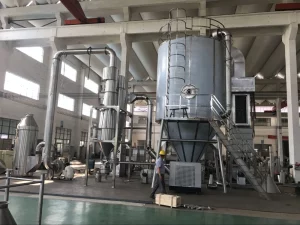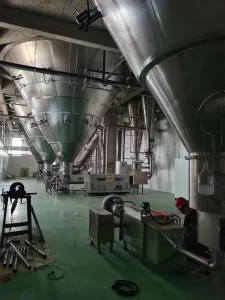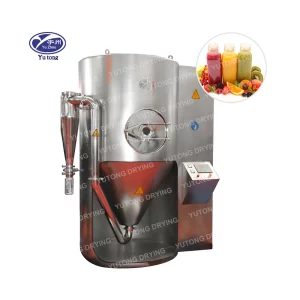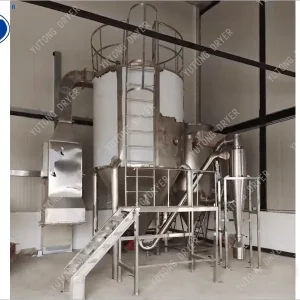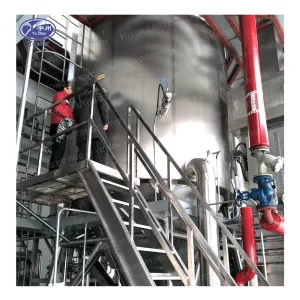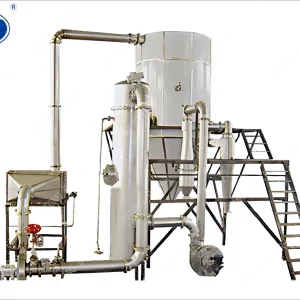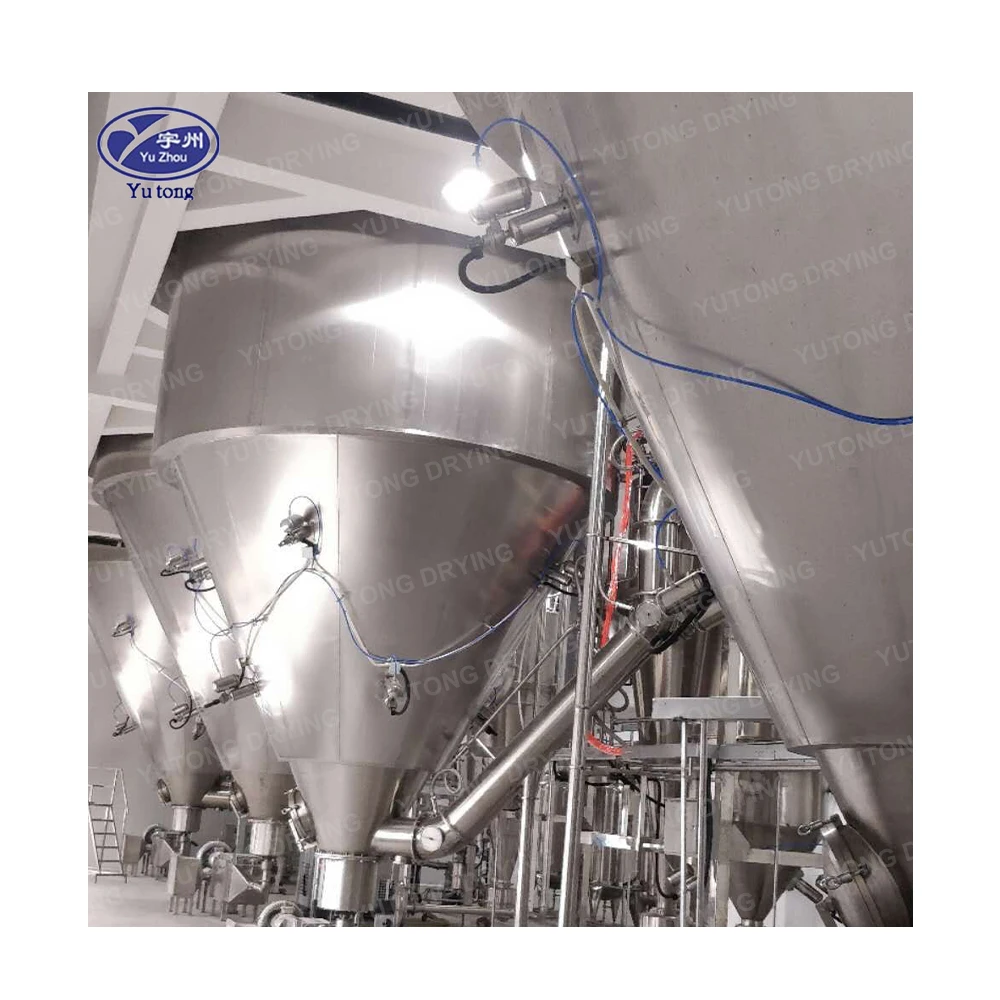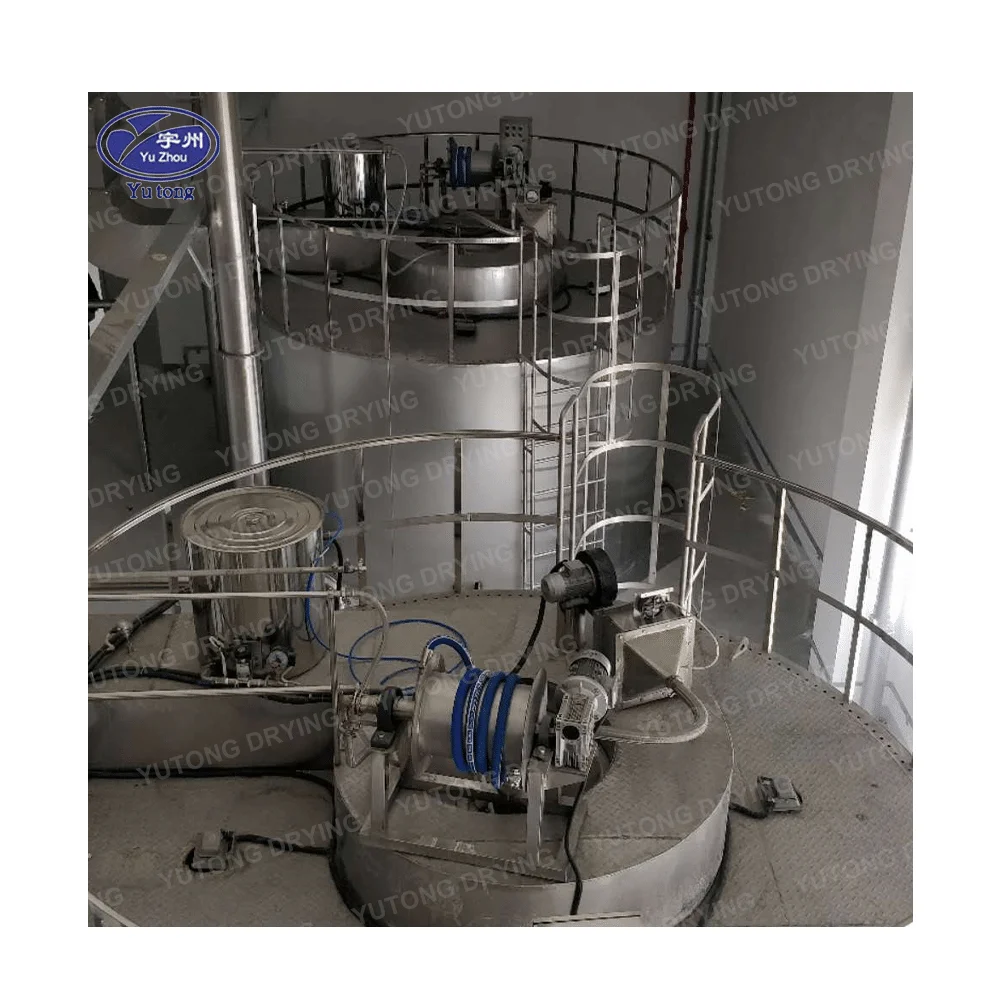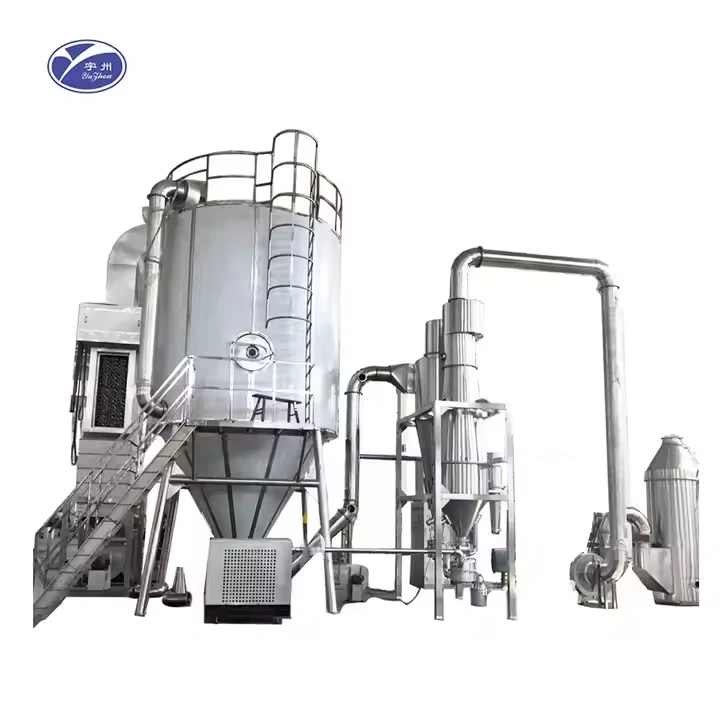In the world of industrial processing, spray drying has emerged as a widely utilized technique for transforming liquid substances into dry powders. This method offers a range of benefits but also comes with certain limitations. In this comprehensive article, we will explore the advantages and disadvantages of spray drying in detail.
Spray drying is a process that involves atomizing a liquid feed into fine droplets and then rapidly drying these droplets by exposing them to a hot gas stream. The resulting dry powder is collected and can be used in various applications across different industries. The popularity of spray drying stems from its ability to produce powders with specific properties and characteristics that are often essential for the success of many products.
Advantages of Spray Drying
1. Rapid Drying
One of the most significant advantages of spray drying is its extremely rapid drying time. The atomization process creates a large surface area for the hot gas to interact with the liquid droplets, enabling rapid evaporation of moisture. This can lead to a significant reduction in processing time compared to other drying methods.
For example, in the food industry, spray drying can convert liquid milk into powdered milk within seconds. This high-speed drying is crucial for meeting the demands of large-scale production and ensuring a continuous supply of products.
The rapid drying also helps to minimize the risk of product degradation due to prolonged exposure to heat or other factors. Heat-sensitive materials can be dried quickly without significant loss of quality.
2. Uniform Particle Size Distribution
Spray drying produces powders with a relatively uniform particle size distribution. The controlled atomization process allows for the creation of droplets of a specific size, which results in powders with consistent particle sizes. This uniformity is highly desirable in many applications as it can improve the flowability, solubility, and stability of the powder.
In the pharmaceutical industry, uniform particle size is essential for ensuring consistent drug delivery and efficacy. Spray-dried powders can be precisely engineered to meet specific particle size requirements, enhancing the performance of drugs and other pharmaceutical products.
The uniformity of spray-dried powders also makes them easier to handle and process, reducing the risk of segregation or caking during storage and transportation.
3. Ability to Handle Heat-Sensitive Materials
Spray drying is particularly well-suited for drying heat-sensitive materials. The short drying time and low temperature exposure minimize the risk of thermal degradation. This makes it possible to dry materials such as pharmaceuticals, biological products, and food ingredients that are sensitive to heat without compromising their quality or activity.
For instance, enzymes and proteins can be spray-dried without significant denaturation, preserving their biological functionality. In the food industry, spray drying can be used to dry fruits and vegetables without destroying their nutritional value and flavor.
The ability to handle heat-sensitive materials widens the range of applications for spray drying and makes it a valuable tool in industries where product quality and integrity are of utmost importance.
4. Versatility
Spray drying is highly versatile and can handle a wide variety of liquid feeds. It can process solutions, suspensions, emulsions, and pastes, making it suitable for a broad range of materials. This versatility allows manufacturers to use spray drying for different products and formulations, depending on their specific needs.
Moreover, spray drying can be customized to produce powders with different properties. By adjusting parameters such as atomization method, drying temperature, and gas flow rate, it is possible to tailor the powder characteristics to meet specific application requirements. For example, powders with different particle sizes, densities, and solubilities can be produced.
The versatility of spray drying makes it a flexible and adaptable process that can be integrated into various production lines.
5. Compact Design
Spray dryers are relatively compact compared to other drying equipment. This makes them suitable for installation in limited spaces, especially in facilities where space is at a premium. The compact design also allows for easy integration into existing production processes, reducing the need for extensive modifications to the production line.
Additionally, the compact size of spray dryers can lead to cost savings in terms of installation and infrastructure requirements. Smaller footprints can result in lower construction and operating costs, making spray drying a more accessible option for many businesses.
Disadvantages of Spray Drying
1. High Energy Consumption
One of the major drawbacks of spray drying is its high energy consumption. The process requires a significant amount of heat to generate the hot gas stream for drying. Additionally, the atomization process also consumes energy. This can result in high operating costs, especially for large-scale production.
In the food industry, for example, the energy consumption of spray drying can be a significant portion of the overall production cost. This can make spray drying less economically viable for some applications, particularly in regions where energy costs are high.
Efforts are being made to develop more energy-efficient spray drying techniques, such as using waste heat recovery systems or optimizing the drying process to reduce energy consumption. However, these solutions may require additional investment and may not be suitable for all applications.
2. Equipment Cost
Spray drying equipment can be expensive to purchase and install. The cost of a spray dryer depends on factors such as its capacity, complexity, and materials of construction. In addition, the associated equipment such as atomizers, gas heaters, and powder collectors also add to the overall cost.
This high initial investment can be a significant barrier for small and medium-sized enterprises (SMEs) that may not have the financial resources to invest in expensive equipment. However, for large-scale production or for products that require the unique advantages of spray drying, the cost may be justified over the long term.
Moreover, the maintenance and repair costs of spray drying equipment can also be significant. Regular maintenance is required to ensure the proper functioning of the equipment and to prolong its lifespan. This can add to the overall operating costs of spray drying.
3. Powder Agglomeration
Spray-dried powders can sometimes agglomerate, forming larger particles. Agglomeration can occur due to various factors such as high humidity, electrostatic forces, and surface properties of the powder. This can affect the flowability and solubility of the powder and may require additional processing steps to break up the agglomerates.
In the pharmaceutical industry, agglomerated powders can cause problems in tablet formulation and drug delivery. In the food industry, agglomerated powders may affect the texture and quality of the final product. Measures such as using anti-caking agents or modifying the drying conditions can be taken to reduce powder agglomeration, but these can add to the complexity and cost of the process.
Agglomeration can also lead to non-uniformity in the powder, which can affect the performance and quality of the final product.
4. Loss of Volatile Components
Spray drying can cause the loss of volatile components from the liquid feed. The high temperatures and rapid drying process can lead to the evaporation of volatile compounds such as flavors, fragrances, and essential oils. This can affect the quality and sensory properties of the final product.
In the food and cosmetics industries, the retention of volatile components is often important for product quality. Specialized spray drying techniques or encapsulation methods may be required to minimize the loss of volatile components. However, these methods can add to the complexity and cost of the process.
The loss of volatile components can also limit the application of spray drying for certain products that rely on these components for their unique properties.
5. Environmental Impact
Spray drying can generate dust and emissions, which can have an environmental impact. The powder particles produced during spray drying can be released into the air, potentially causing air pollution. In addition, the energy consumption and waste heat generated by the process can contribute to greenhouse gas emissions.
Manufacturers need to implement proper dust collection and emission control systems to minimize the environmental impact of spray drying. This can add to the cost and complexity of the process. Efforts are also being made to develop more sustainable spray drying techniques that reduce energy consumption and emissions.
The environmental impact of spray drying is an important consideration, especially in an era of increasing environmental awareness and regulations.
Spray drying is a powerful technique that offers several advantages, including rapid drying, uniform particle size distribution, ability to handle heat-sensitive materials, versatility, and compact design. However, it also has some disadvantages, such as high energy consumption, equipment cost, powder agglomeration, loss of volatile components, and environmental impact. When considering spray drying for a particular application, it is essential to carefully weigh these advantages and disadvantages and determine if the benefits outweigh the costs. In addition, efforts should be made to optimize the spray drying process to minimize its disadvantages and maximize its advantages. With proper design and operation, spray drying can be a highly effective and efficient method for converting liquid materials into dry powders, contributing to the success of various industries.
What is spray drying in the pharmaceutical industry?
Spray drying is a fascinating and essential process within the pharmaceutical industry. Transforming liquid solutions into dry powders allows for the creation of medications that are easier to handle, store, and administer. The process is not only about drying; it involves a complex transformation that tailors the properties of the final product to meet specific therapeutic needs. In this article, we’ll explore the fundamentals of spray drying, its significance in pharmaceuticals, and how it compares to other drying methods, providing insights into why it is a preferred method for many pharmaceutical applications.
Understanding the Spray Drying Process
At its core, spray drying involves the rapid drying of a liquid feed into a dry powder. This is accomplished by atomizing the liquid into a hot drying medium, typically air. The process is highly efficient and is capable of producing powders with specific particle sizes and properties. The versatility of spray drying also allows for the incorporation of various excipients, aiding in the stabilization and enhancement of the active pharmaceutical ingredient (API). This method is particularly advantageous for compounds that require precise control over particle morphology and distribution.
Steps in the Spray Drying Process
- Preparation of the Liquid Feed: The process begins with a liquid solution or slurry containing the desired active pharmaceutical ingredient (API) and excipients. This step is crucial as the formulation needs to be homogeneous and stable to ensure consistent results. The choice of solvents and excipients can significantly affect the efficiency and outcome of the spray drying process.
- Atomization: The liquid is then atomized using a nozzle or rotary atomizer to create fine droplets. This increases the surface area for drying, allowing for rapid moisture removal. Atomization is a critical step where the droplet size is controlled, impacting the final particle size and the drying kinetics of the process.
- Drying: The atomized droplets are introduced into a hot drying chamber, where the moisture evaporates quickly, leaving behind dry particles. The drying temperature and airflow must be carefully controlled to prevent thermal degradation of the active ingredients. Advanced drying chambers are designed to ensure uniform drying conditions throughout the process.
- Separation: The dried particles are collected using a cyclone separator or a bag filter, leaving behind the final powdered product. This step ensures that the product is free from contaminants and that the particle size distribution remains within the desired specifications. The choice of separation technique can also influence the overall yield and purity of the final product.
Importance of Spray Drying in Pharmaceuticals
Spray drying offers several advantages that make it an indispensable technique in the pharmaceutical industry. Its ability to transform liquid formulations into dry powders without compromising the integrity of the active ingredients is a significant advantage. Moreover, the process can be tailored to produce powders with specific characteristics, such as particle size, density, and flow properties, which are critical for drug formulation and delivery.
Enhanced Stability and Shelf Life
By converting liquid formulations into dry powders, spray drying enhances the stability and shelf life of pharmaceutical products. The removal of moisture reduces the risk of microbial growth and degradation, ensuring that medications remain effective for longer periods. Additionally, the elimination of solvents during the drying process minimizes the risk of solvent-related degradation and enhances the chemical stability of the active ingredients.
Improved Solubility and Bioavailability
Many pharmaceutical compounds suffer from poor solubility, affecting their bioavailability. Spray drying can be used to create amorphous solid dispersions, which enhance solubility and improve the drug’s absorption in the body. This enhancement is achieved by dispersing the drug in a polymer matrix, preventing the recrystallization of the active ingredient and maintaining it in an amorphous state, which is more soluble.
Precision in Particle Size
The ability to control particle size is crucial in pharmaceuticals, as it influences the drug’s dissolution rate and bioavailability. Spray drying allows for precise control over particle size, resulting in uniform and consistent products. This control is essential for ensuring the reproducibility of drug release profiles and for meeting regulatory standards for pharmaceutical products.
Versatility and Scalability
Spray drying is a highly versatile process that can be applied to a wide range of pharmaceutical compounds. It is also easily scalable, making it suitable for both small-scale laboratory work and large-scale commercial production. This scalability is facilitated by the ability to adjust process parameters, such as feed rate and drying temperature, to accommodate different production volumes without compromising product quality.
Comparing Spray Drying to Other Drying Techniques
While spray drying is a popular choice, it’s important to understand how it compares to other drying methods used in the pharmaceutical industry. Each drying technique has its unique advantages and limitations, making the selection process dependent on the specific requirements of the pharmaceutical product being developed.
Vacuum Drying
Vacuum drying involves removing moisture under reduced pressure, allowing for drying at lower temperatures. This technique is ideal for heat-sensitive compounds. However, it can be slower and less efficient than spray drying. While vacuum drying is effective for preserving thermally labile substances, it may not provide the same level of particle size control and throughput as spray drying.
Freeze Drying
Freeze drying, or lyophilization, involves freezing the product and then removing moisture through sublimation. While it preserves the integrity of delicate molecules, it is a time-consuming and expensive process compared to spray drying. Despite its cost, freeze-drying is often employed when the preservation of biological activity is paramount, as it minimizes thermal and oxidative stress on the product.
Fluid Bed Drying
Fluid bed drying involves suspending particles in a stream of hot air, allowing for efficient drying. Although effective, it may not offer the same level of control over particle size and morphology as spray drying. Fluid bed drying is typically used for granulation and coating processes, where uniform heat distribution and efficient drying are required, but precise particle engineering is less critical.
Applications of Spray Drying Beyond Pharmaceuticals
While spray drying is invaluable in pharmaceuticals, its applications extend to other industries as well, such as the food industry. The ability to produce fine, homogeneous powders makes it a versatile technology that is used in various industrial applications beyond drug formulation.
Application in Food Industry
In the food industry, spray drying is favored for its ability to produce stable, shelf-stable powders. It allows for the preservation of flavors, colors, and nutritional content, making it a popular choice for various food products. Products such as milk powder, instant coffee, and powdered flavors benefit from the enhanced stability and ease of storage provided by spray drying. The process also allows for the encapsulation of sensitive ingredients, protecting them from oxidation and extending their shelf life.
Challenges and Considerations in Spray Drying
Despite its advantages, spray drying presents certain challenges and considerations that must be addressed. Understanding these challenges is critical for optimizing the process and ensuring the production of high-quality pharmaceutical products.
Heat Sensitivity
Some pharmaceutical compounds are sensitive to heat, and the high temperatures used in spray drying can lead to degradation. Careful optimization of the process parameters is necessary to mitigate this risk. Techniques such as using inert gases or reducing drying temperatures can help protect heat-sensitive substances from thermal degradation during spray drying.
Equipment and Maintenance Costs
The equipment used for spray drying can be costly, and regular maintenance is required to ensure optimal performance. However, the benefits of the process often outweigh these costs. Investing in high-quality equipment and a robust maintenance program can prevent downtime and ensure consistent product quality, making spray drying a cost-effective solution in the long run.
Scale-Up Considerations
Scaling up from laboratory-scale to commercial-scale production can present challenges. Ensuring that the same product quality and characteristics are maintained during scale-up is crucial. This requires a thorough understanding of the process parameters and their impact on product attributes. Pilot-scale trials and advanced modeling techniques can aid in successful scale-up, ensuring that the process is both efficient and reliable at a larger scale.
Conclusion
In conclusion, spray drying is a vital technique in the pharmaceutical industry, offering numerous benefits in terms of stability, solubility, and scalability. By understanding the process and its applications, pharmaceutical manufacturers can harness its potential to create high-quality medications that meet the needs of patients worldwide. The precision and control offered by spray drying make it a preferred method for developing complex formulations and enhancing the bioavailability of poorly soluble drugs.
As technology and research continue to advance, spray drying will likely become even more integral to the development of innovative pharmaceutical products, ensuring that patients receive safe, effective, and reliable treatments. Continued advancements in spray drying technology and process optimization hold the promise of expanding its applications and improving the efficiency of pharmaceutical manufacturing, ultimately enhancing the quality of life for patients globally.

